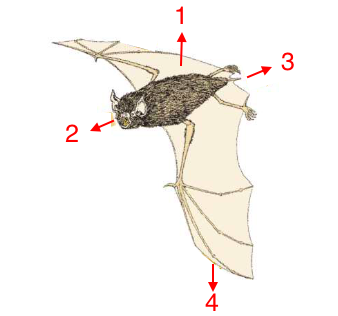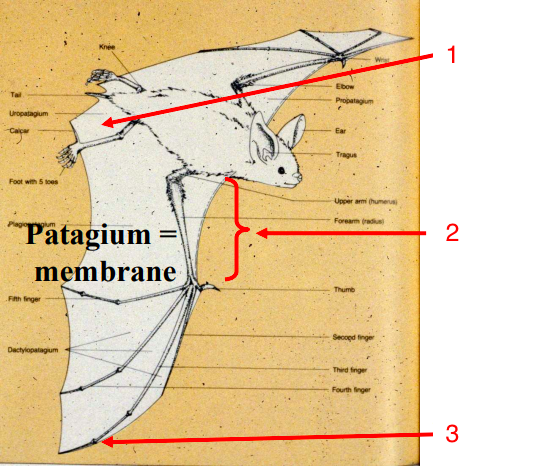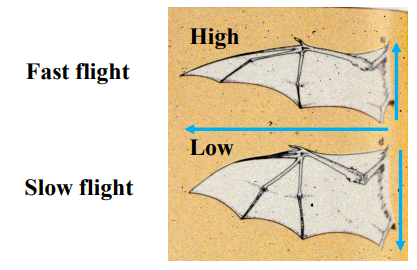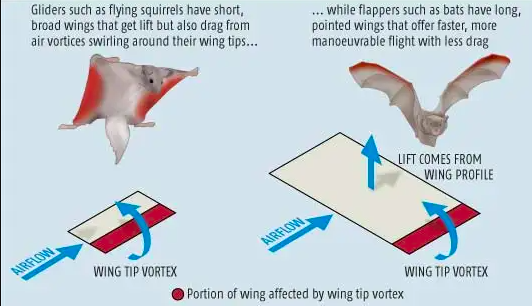Air and Water Locomotion
1/12
There's no tags or description
Looks like no tags are added yet.
Name | Mastery | Learn | Test | Matching | Spaced |
|---|
No study sessions yet.
13 Terms
Explain how an airfoil generates lift and compare its function in birds, bats, and cetaceans (hydrofoil in the case of cetaceans).

Provide the four forces that act on flying organisms.
lift
thrust
drag
gravity

Know the parts of a bat's patagium and what they are involved in.
Uropatagium
controls turning
Propatagium
controls lift
Wing Tip
controls thrust
Compare the morphological adaptations that distinguish high vs. low aspect ratio wings in bats and predict their ecological consequences (foraging range, maneuverability, dispersal).
Low Aspect Ratio Wings | High Aspect Ratio Wings |
Nectar feeders | Insectivores |
Slow, agile, and highly manuverable | Swift, efficient, and high-speed |
Live in forests + dense vegetation | Live in open areas |
Small foraging range | Large foraging range |
Poor dispersers/migrators | Good dispersers/migrators |

Birds vs bat flight
Bird Flight | Bat Flight |
Wings = modified forelimbs with feathers | Wings = elongated digits with patagium membrane |
Feathers generate airfoil + lift | Patagium surface generates lift |
Stiff primaries generate thrust | Wing tips generate thrust |
Rigid feathers = thicker airfoil → efficient lift per wingbeat | Thin, flexible membrane = thinner airfoil → must flap wings frequently to maintain lift |
Inflexible, lightweight skeleton | Flexible skeleton + uropatagium |
Keeled sternum = strong flight muscles | Less prominent keeled sternum |
High efficiency for long distance flight | Lower efficiency for long distances Best for tight areas |

True flight vs gliding
1 similarity and 1 difference
similarity
aspect ratio determines effectivness of glide
difference
gliding flight path is downward

Trace the evolutionary transition of cetaceans from semi-aquatic ancestors (Archaeocetes) to fully aquatic forms, highlighting skeletal and morphological changes.
Identify key adaptations in cetaceans for energy conservation (body shape, hairless, smooth skin, loss of appendages, telescoping skull) and explain their functional significance for efficient locomotion.
Compare high vs. low aspect ratio tail flukes in cetaceans and relate them to differences in thrust, acceleration, and energy costs.
Describe at what point porpoising in dolphins becomes advantageous as it relates to reductions in drag versus expending the energy required to jump.
Contrast convergent adaptations in Sirenia vs. Cetacea, with emphasis on buoyancy control, body form, and vulnerability to human threats.
Compare the locomotor strategies of otariids (eared seals) and phocids (earless seals) in both aquatic and terrestrial contexts, linking morphology to movement efficiency.
Discuss convergent adaptations for aquatic life in marine carnivores (seals, sea lions, otters) and semi-aquatic mammals (beaver, desman, potamogale), focusing on body streamlining, limb modification, and tail/flipper structure.